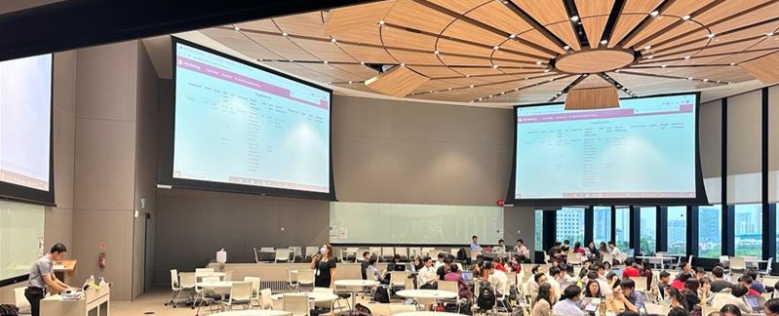Education: Innovation in teaching and learning
 | By Dr Ng Kian Bee, Head of Digital Learning at LKCMedicine |
Crows can do more than just the water-displacement trick, made famous by the Aesop fable "The Crow and the Pitcher". It has been demonstrated that New Caledonian crows were able to not only use tools to devise solutions to reach their objectives, but were able to mentally plan sub-goals and steps to solve problems while avoiding distractors along the way. The ability to use tools, make sub-plans and avoid distractors is widely recognised as a trademark of human cognition.
In today’s digital world, we are bombarded with so much misinformation and snake oil, that the behaviour of this little bird is a reminder that we could all use a bit of our inert cognition to guide us in our teaching and learning (T&L) journey.
On one hand, innovation in T&L cannot happen without the use of digital technology. On the other hand, with the myriad of software and tools available, we can easily bankrupt our limited resources if we are not selective in planning our technology engagement and suppressing distracting answers.
Technology tools
The Digital Learning (DL) team at LKCMedicine plays a key role in our T&L innovation journey. Take for example the use of Virtual Reality (VR) for medical education. VR gained popularity in Singapore since 1990s in the form of Head Mounted Display. However, it was expensive and was mainly used by academic and research institutions.
Today, this technology has reached the consumer homes with affordable VR headsets. The DL team recognised the maturity of this technology. It saw the abilities to carry out simulated procedural training such as medical safety protocol practice, surgical training, and high-fidelity immersive visualisations. Hence, the team acquired a couple of the VR headsets and developed a simple immersive game to illustrate its possibilities. The game debuted during the LKCMedicine Appreciation Day last December and was well received. It is now available for visitors to experience at our Medical Library in the Clinical Sciences Building. This step wise and agile approach allows us time to explore and appreciate the application of this increasingly popular tool for medical training.

Content creation
Beyond the use of tools to augment learning, we believe that medical content creation and delivery are also due to be disrupted by Artificial Intelligence (AI). Current practices of getting content recorded and presented are good use of digital content delivery post pandemic. However, it is passive and may not be enough to meet future learning challenges where we require the learning data from our learners to be captured, analysed, and anticipated.
For example, feedback from healthcare institutions regarding our students’ performances at various junctures should allow us to reflect on our training and assessment priorities. The feedback loop should be closed with the use of AI and machine learning to help build a more reliable predictive medical training curriculum and learning model. The right application of AI in medical education is now one of the plans that the DL team undertakes to explore. As a start, the team has developed electronic-prescription and patient electronic dietary ordering systems for our Year 5 students to have hands-on practice. The systems capture learning data, including the mistakes of our learners that were provided as feedback to the instructors for case study enhancements.

Change management
Founder of Ford Motor Company Henry Ford once said, “If I had asked people what they wanted, they would have said faster horses”. This quote encompasses the psychology of basic human behaviour. That is, many of us are resistant to change. Not because we are lazy but simply because our brain is wired to exercise default decisions that are of least resistance. That means choosing the “faster horses” instead of venturing into something unknown and unpredictable. Therefore, in introducing new tools and solutions, attention needs to be given to orchestra a proper change management.
While our learners and stakeholders might not be the most well-versed in T&L pedagogy, they are the recipients of the knowledge. Without their involvement, no amount of well thought through plans could be executed. The DL team recognised that technology itself does not solve problems. It is always through the investment of the human capital built on top of experience and know-how that we could see the multiplier effect of innovative technology. By working closely with the larger learners’ community, I believe that we are on the right track towards excellence in medical education.

